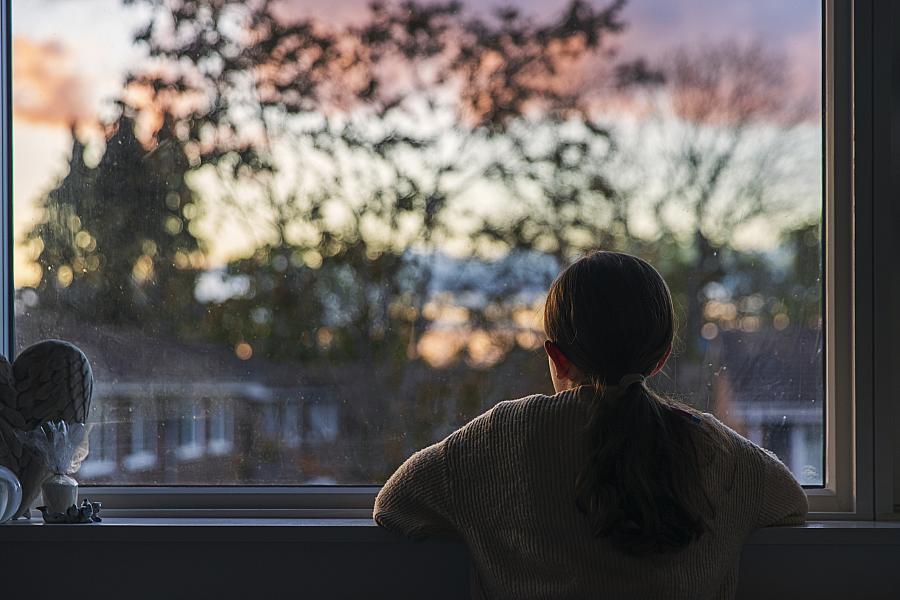A reporter melds data and trust-building to show how Iowa parents are struggling to get their kids mental health care

(Photo via Getty Images)
Last year, I spoke with an Iowa mother who found her then-6-year-old son attempting to take his own life during a monthslong effort of trying — and failing — to find him the mental health care he needed. Hers was just one of many heartbreaking stories I encountered while reporting on the youth mental health crisis in the state.
Experts I spoke with would use analogies like a maze or a room with a hundred different doorways to explain how Iowa’s youth behavioral health system worked, or rather, didn’t work. The state system lacked clear guidance on how to get to the right level of services. As a result, families would constantly hit roadblock after roadblock in their search for help, unsure of where to turn as their child’s mental health continued to deteriorate.
Through conversations with behavioral health professionals, experts and more than a dozen Iowa parents across the state, I had a sense that many families struggled to find appropriate interventions before their child reached a crisis point. But in my mind, one question remained: Was there a way to measure this problem?
That’s where the Data Fellowship from the USC Annenberg’s Center for Health Journalism came in. I applied for the fellowship in the hope it would give me access to the training necessary to understand and analyze any data I could obtain on this subject. I only had rudimentary skills with a spreadsheet and lacked experience in pursuing a project of this scale. I felt this fellowship could offer the mentorship I needed.
And it did. Following an insightful training week on the USC campus and some much-needed advice from my senior fellow, I began digging into this issue. My first step was to request data from Iowa’s Department of Health and Human Services to get records of the number of Iowa youth using publicly funded behavioral health services between 2018 and 2023. It took months, and much back and forth with the state’s data team, but I finally obtained that data set in the middle of my six-month fellowship.
The data painted a stark need, and underscored a trend many families and behavioral health care facilities were feeling. The number of Iowans under the age of 18 who sought out mental health and substance use disorder care rose 15% in that six-year period, with the biggest spike happening in 2022, after COVID-19. But even as demand rose beyond pre-pandemic totals, the amount of state and federal money spent on these services by 2023 was still below overall spending in 2018.
State officials told me they believed spending was down because more youth were accessing services that cost less to provide, such as outpatient therapy. But the data still highlighted a common thread across many interviews I had with experts and families. For those who rely on public insurance programs like Medicaid, the hurdles to getting care are considerable. Few mental health providers accepted Medicaid, and those that did had long waitlists for those services.
I published these findings as part of a series I dubbed “Young and in Crisis” for the Des Moines Register. As part of the report, I strove to put a human face on some of this. In the first story in this series, I profiled two women who lived in different parts of the state, but shared the same experience of navigating Iowa’s confusing behavioral health system to find their young sons the care they needed. This story also included several conversations with experts and providers to uncoil why these mothers’ stories had become so familiar.
When we published this first piece, I also worked with my newsroom’s audience growth strategist to put together a call out for sources, asking readers to contact us if they had similar plights. More than a dozen individuals responded to our Formstack to share their stories, with the majority expressing a willingness to speak on the record for additional coverage. It was a simple, yet effective way to reach more firsthand perspectives on this issue.
This led me to a little-known, but increasing trend that was beginning to alarm state officials: The number of Iowa parents giving up custody of their children to the state in a desperate move to find them behavioral health services. After hearing about this, I requested additional data from the state health and human services agency.
The data showed two dozen parents had relinquished custody of their children in 2024 for no other reason than they were “unable to care for behavioral health needs,” according to the Iowa HHS director. Among those was one Iowa mother who spoke on the record for my story about the choice she made to give up custody of her teenaged son after a pattern of starting fires in her home became a serious safety concern for her and her other son. Her voice made my story much more powerful, and without that initial call-out for sources, I likely wouldn’t have connected with her.
For weeks after the “Young and In Crisis” stories were first published, I would receive emails almost daily from families like the ones I had featured as part of my reporting. These were parents who were at a loss on how to get their child the mental health care they needed or knew that feeling too well from their own past experiences. Most are from Iowa, but the emails arrived from across the country as the story reached beyond our readership.
The response to my series has proven how invaluable it is while reporting to really spend time with sources and gain their trust to tell their stories. But more importantly, it pays to develop the skills to find and analyze data that can measure the scale of issues like the youth mental health crisis.

